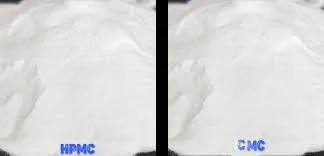
Novemba . 06, 2024 05:27 Back to list
Solubility of HPMC in Various Organic Solvents for Formulation Applications
Solubility of HPMC in Organic Solvents A Comprehensive Review
Hydroxypropyl methylcellulose (HPMC) is a cellulose derivative widely utilized in pharmaceuticals, food, cosmetics, and construction industries due to its excellent film-forming, thickening, and binding properties. Understanding the solubility behavior of HPMC in organic solvents is crucial for its application in various formulations and processes. In this article, we will explore the factors that influence the solubility of HPMC in organic solvents, the types of solvents that are effective, and the implications for its use in different industries.
Understanding HPMC
HPMC is synthesized through the modification of cellulose, with hydroxypropyl and methyl groups introduced to enhance its solubility and functional characteristics. The degree of methoxy and hydroxypropyl substitution largely determines the solubility profile of HPMC. Generally, HPMC is soluble in water, but its solubility in organic solvents has been a topic of interest, especially when formulating drug delivery systems and coating materials.
Factors Affecting Solubility
1. Degree of Substitution The chemical structure of HPMC, including the level of methyl and hydroxypropyl substitution, significantly impacts its solubility in organic solvents. Higher degrees of substitution typically result in improved solubility, allowing for a broader range of solvent compatibility.
2. Polarity of Solvents The solubility of HPMC in organic solvents is closely related to the polarity of the solvent. Polar organic solvents such as ethanol and isopropanol tend to solvate HPMC efficiently due to favorable interactions, while non-polar solvents (like hexane) show limited solubility due to insufficient interaction between the solvent and HPMC.
3. Temperature Temperature is another critical factor influencing solubility. An increase in temperature usually enhances the solubility of HPMC in organic solvents, as higher thermal energy facilitates the breaking of intermolecular interactions and the dissolution process.
4. Presence of Other Solutes The presence of salts, acids, or other solubilizing agents can modify the solubility of HPMC in organic solvents. These additives can disrupt the intermolecular hydrogen bonding within HPMC, thereby increasing its solubility.
Effective Organic Solvents for HPMC
Several organic solvents have been shown to effectively dissolve HPMC, facilitating its use in various applications
hpmc solubility in organic solvents

1. Ethanol This solvent is one of the most widely used to dissolve HPMC due to its polar nature and ability to disrupt the hydrogen bonds in the polymer.
2. Methanol Similar to ethanol, methanol can dissolve HPMC effectively, making it suitable for applications in drug formulations where a clear solution is required.
3. Acetone Acetone is another organic solvent that can solvate HPMC effectively. However, it is generally used in specific formulations because of its volatility.
4. Dimethyl Sulfoxide (DMSO) DMSO is a highly polar aprotic solvent known for its ability to dissolve a wide variety of substances, including HPMC. Its use is prevalent in pharmaceutical formulations where a robust solvent is needed.
Implications for Industry Applications
Understanding the solubility of HPMC in organic solvents is vital for multiple applications. In the pharmaceutical industry, HPMC is often used as a film-forming agent in controlled-release formulations. The choice of solvent can significantly affect the drug release profile and bioavailability.
In cosmetics, solubility characteristics dictate the formulation and stability of products, from creams to serums. The right organic solvent can enhance the texture, application, and overall effectiveness of cosmetic products.
In construction, HPMC is employed as a thickening agent in mortars and plasters, where solubility in aqueous and organic systems can affect performance and application methods.
Conclusion
The solubility of HPMC in organic solvents is a multifaceted topic influenced by various factors, including chemical structure, solvent polarity, and external conditions. As industries continue to innovate and seek effective formulations, the understanding of HPMC solubility remains paramount for optimizing product performance. Future studies are required to explore unexplored organic solvents and combinations, which could yield new applications for HPMC across different fields. Through continued research, HPMC's versatility as an industrial polymer will undoubtedly expand, benefiting both manufacturers and consumers alike.
-
The Widespread Application of Redispersible Powder in Construction and Building Materials
NewsMay.16,2025
-
The Widespread Application of Hpmc in the Detergent Industry
NewsMay.16,2025
-
The Main Applications of Hydroxyethyl Cellulose in Paints and Coatings
NewsMay.16,2025
-
Mortar Bonding Agent: the Key to Enhancing the Adhesion Between New and Old Mortar Layers and Between Mortar and Different Substrates
NewsMay.16,2025
-
HPMC: Application as a thickener and excipient
NewsMay.16,2025
-
Hec Cellulose Cellulose: Multi functional dispersants and high-efficiency thickeners
NewsMay.16,2025







